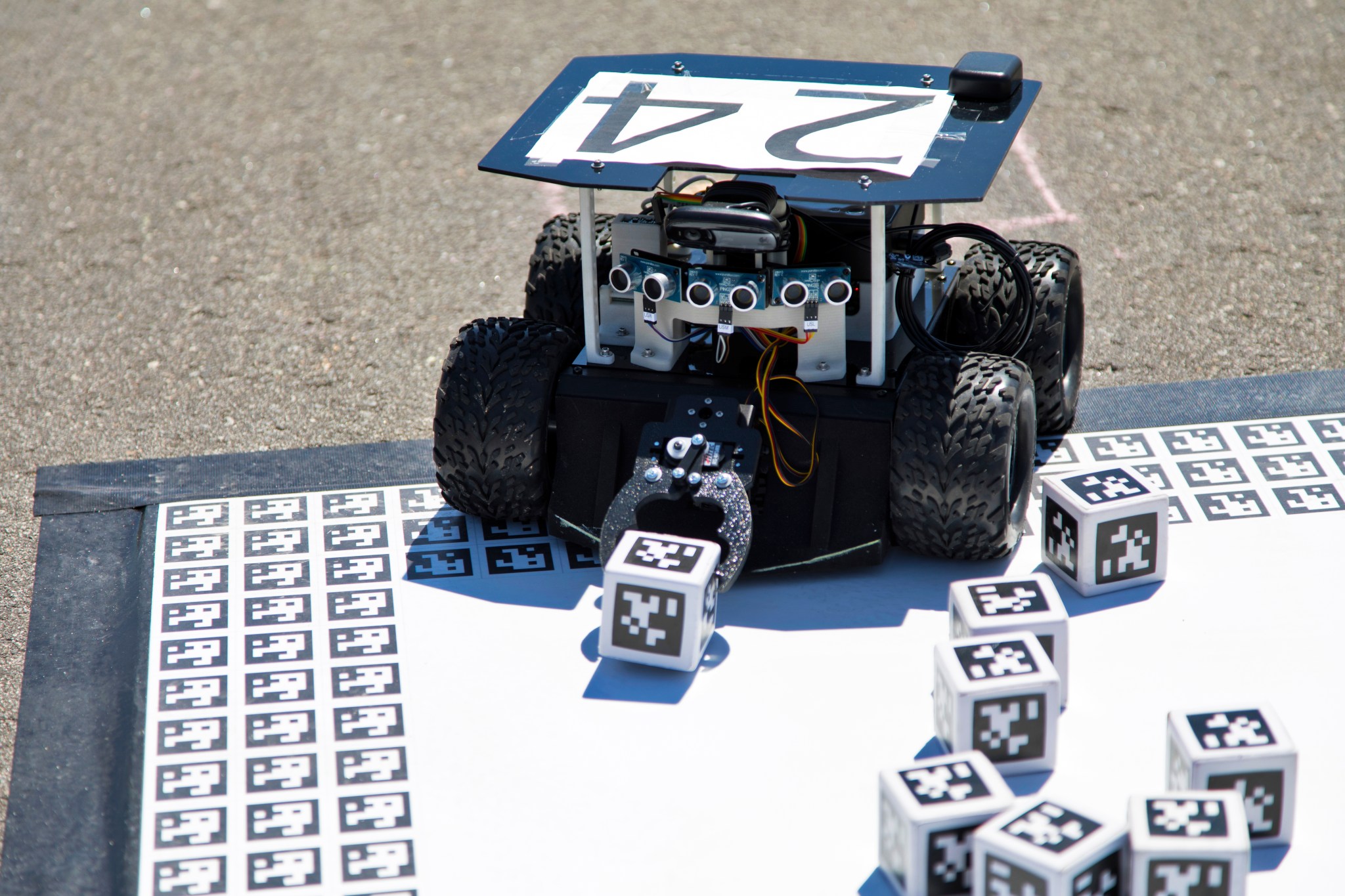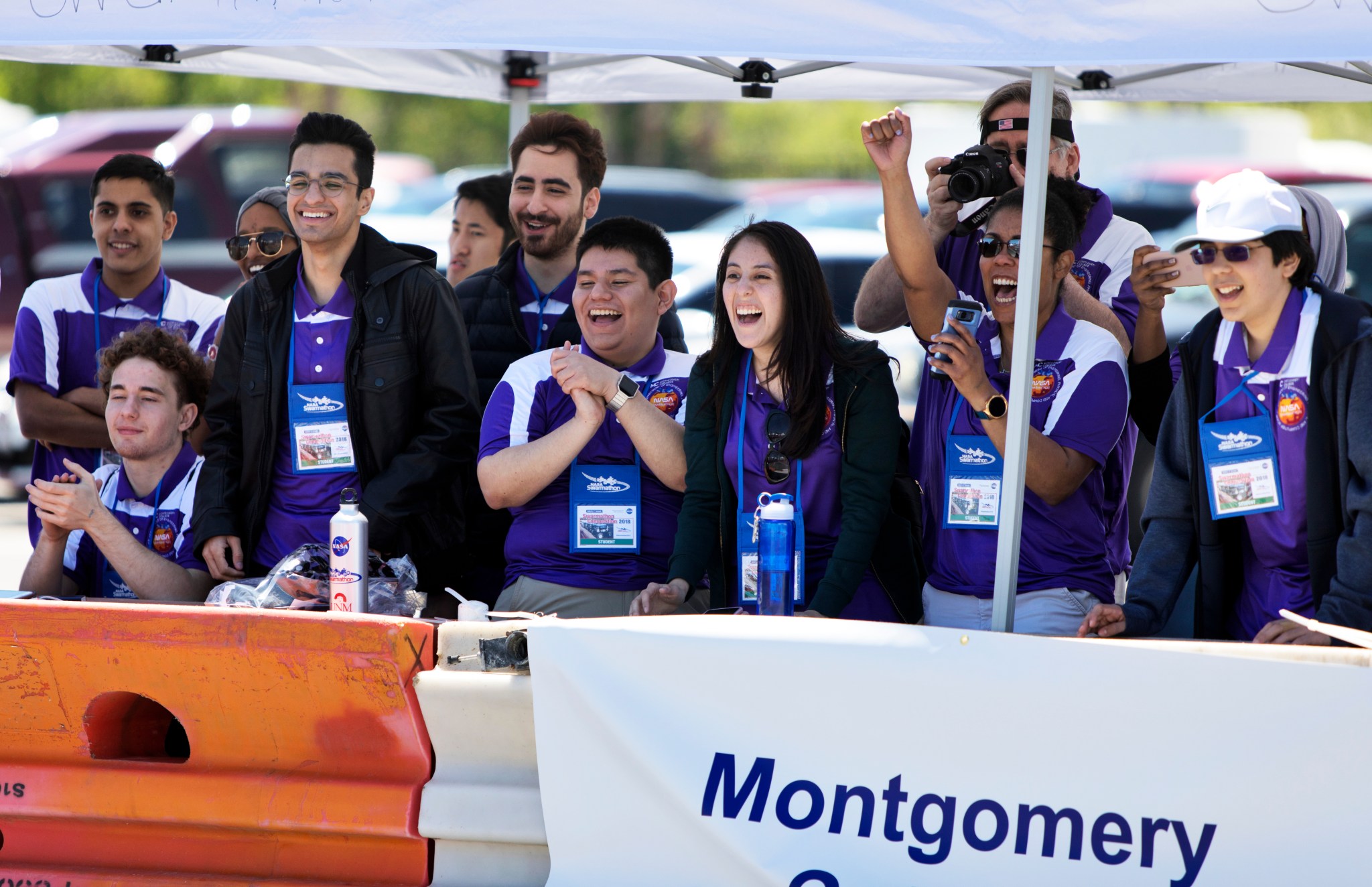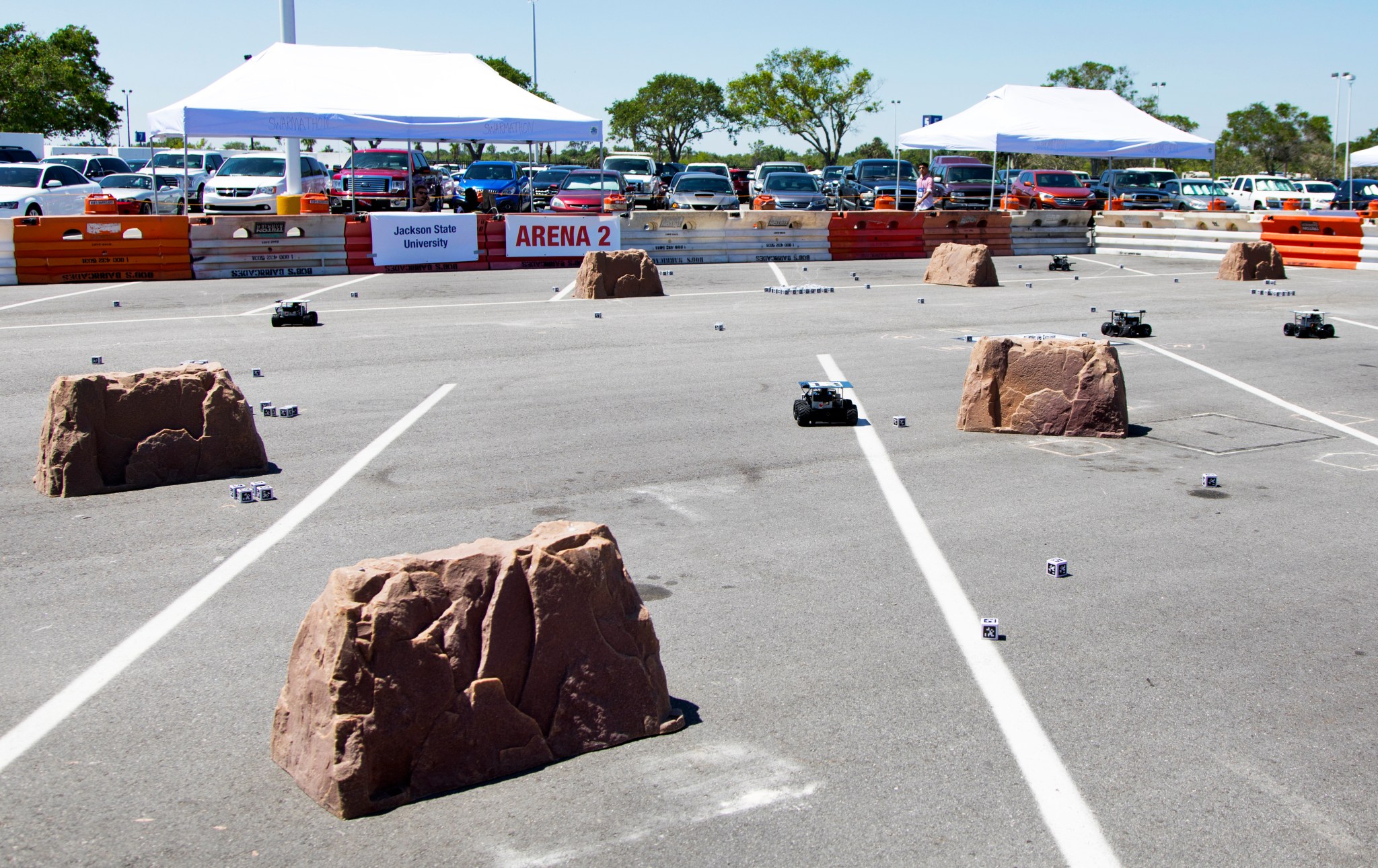By Bob Granath
NASA’s Kennedy Space Center, Florida
Students from universities and community colleges across the nation recently participated in third annual Swarmathon. The robotic programming competition took place at NASA Kennedy Space Center’s Visitor Complex April 17-19. Their developments may lead to technology that could help astronauts find needed resources while exploring the Moon or Mars.
In her welcoming remarks, Deputy Center Director Janet Petro noted that work is ongoing to prepare for NASA’s new rocket that will send humans to deep space. The Space Launch System with the Orion spacecraft is designed to carry astronauts well beyond low-Earth orbit.
“That will set the stage for you to contribute as part of the teams that will use code similar to what you are using today to help robotics as humans explore the Moon and Mars,” she said.
For this year’s competition, students participated in the programming competition by developing software code to operate the innovative robots called “Swarmies.”
Swarmies are small robotic vehicles measuring about 12 inches by 12 inches by 8 inches. Each Swarmie is equipped with sensors, a webcam, a GPS system and a Wi-Fi antenna. They operate autonomously and can be programmed to communicate and interact as a collective swarm. In the competition, robots searched walled arenas looking for “resources” in the form of small cubes with AprilTags, which are similar to bar codes.
NASA’s Minority University Research and Education Project (MUREP) hosted the competition as part of the agency’s on-going efforts to increase the number of NASA-focused science, technology, engineering and mathematics, or STEM, experiences that engage underrepresented groups in education.
According to Theresa Martinez, MUREP STEM Engagement manager in Kennedy’s Education Projects and Youth Engagement Office, participants develop practical skills that could aid NASA’s exploration goals.
“Swarmathon students gain experience with code integration, hardware testing, software engineering, project management and team collaboration critical to their future success in robotics and computer science,” she said. “Their efforts will further advance ‘swarm robotics’ technology for future NASA space exploration missions and we hope some of the students will return and help us in the future.”
At the conclusion of the event, Durham Technical Community College, in Durham, North Carolina, was presented the first-place award capturing a $5,000 cash prize. First place in the virtual competition went to City College of New York, in New York, awarded a $3,000 prize.
The Swarmathon is the brainchild of Dr. Melanie Moses, associate professor of computer science at the University of New Mexico. It is a cooperative effort with NASA’s MUREP program in partnership with the Kennedy Swamp Works, allowing a diverse group of students to use their programming and code skills in a real-life project.
The Swarmie robots were originally developed in Kennedy’s Swamp Works, which was established for rapid, innovative and cost-effective exploration mission solutions through partnerships across NASA, industry and academia.
Moses says she’s hopeful that some of these students will ultimately choose to pursue computer science or STEM as a career.
“Students are able to take the technical skills they learn in programming class and put it to work in a collaborative environment where they must overcome numerous challenges,” she said. “One of the most important things they learn is that these are complex problems and there are no right answers, but many approaches to creatively come to a solution.”
Martinez noted that interest in the popular Swarmathon is growing. In the spaceport’s first annual Swarmathon, 12 colleges participated. Interest increased last year, with 20 teams joining in. In this year’s Swarmathon, 23 teams represented 24 universities and community colleges involved in the effort. Additionally, seven teams participated in a virtual competition.
Swarmathon participation is designed to improve students’ skills in robotics and computer science, further advancing technology for future NASA space exploration missions. The aspiring computer engineers developed search algorithms for robotic swarms. Algorithms are self-contained, step-by-step operations to perform calculation, data processing and automated reasoning. Computer code similar to those designed for Swarmie robots also could be used for other applications, such as cleaning up hazardous waste.
Successful exploration of the Moon and Mars requires the location and retrieval of local resources on the surface of these locations well beyond Earth. Such technologies are needed to find and collect materials such as ice (convertible into liquid water, hydrogen fuel and oxygen to support human life) and rocks, minerals and construction materials to build human shelters.





























